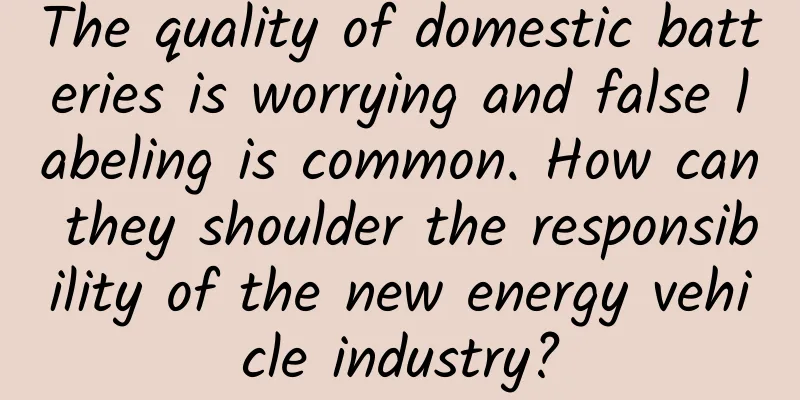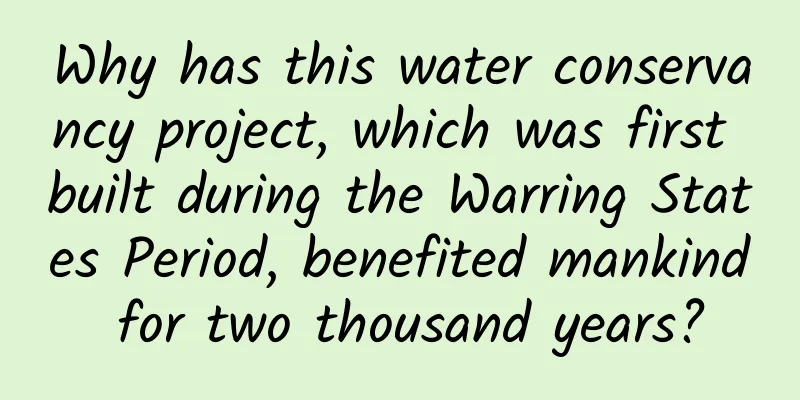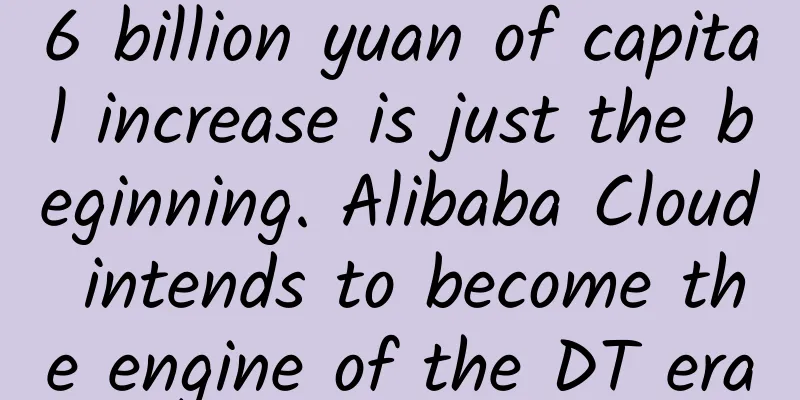How to formulate a planning scheme? 5 standard steps!

|
This article is a part of an advanced project management course previously developed by the company. It is about how to make a project more controllable. The purpose is to solve the problem that many project PMs or product operators always feel that something is unclear during the planning of a project, which leads to many problems in subsequent execution, but they do not have the right methods and tools to help them think through this scenario. In fact, during the course, I found that everyone was very interested in this part and asked more questions. After the class, I repeatedly revised and improved it based on everyone's opinions and suggestions. Now I would like to officially present to you a complete set of methodologies (tools) that I personally believe can help you perfect the formulation of a project plan. It is not the only answer, but each specific point is a summary of my personal experience of nearly 50 successful or failed project planning. I hope it is useful. Targeted scenarios: common online projects, special events, interactive marketing , innovative business columns, etc.; other more complex scenarios are not included. Standard process for program formulation: problem analysis - program formulation - feasibility assessment - result simulation - ten questions and ten answers ||Proposition analysis The first step in all project planning is to receive a task, get a KPI, and then start planning the plan. However, many problems in the subsequent project execution are often buried in this link, mostly due to deviations in understanding of the original task (proposition) or failure to reach a consensus. The proposition analysis phase includes concepts from two perspectives, helping you to find the direction of your project from the beginning and having a clear and verifiable tool to help you determine whether the project direction is correct. | Locking quantitative indicators + guiding indicators to ensure execution consistency At the beginning of most projects, everyone is given a KPI that is either focused or vague, perhaps it is to reach a transaction volume of XXX million, or it may be to carry out an innovative project of XXX. Many project plans are born from such a meeting: "Hello everyone, this is our KPI, let's think about how to do it." However, different roles in each project have different perspectives and positions, and different levels of understanding of the project background, which often leads to differences in understanding of the goals. Differences lead to execution deviations, and execution deviations lead to rework, adjustments, delays, and even everyone going off track. I believe that most project PMs and product operators have a deep understanding of this phenomenon and have suffered greatly from it. Digging deeper into the source, through examples of observations of all project planning processes, it was found that the disagreements were often caused by differences in the ability to interpret quantitative indicators and directional indicators in different roles. Operations and business like to look at indicators, such as how much GMV should be achieved, and how much traffic and conversion rate should be achieved respectively. If there is a lack of traffic, then I will take inventory of resources. Products (of course, most products are based on KPIs) or R&D are more inclined to directional indicators, achieving XX goals through XX strategies. These are two different ways of thinking about disassembly and doing things, so there will inevitably be conflicts. Therefore, an effective solution is to invite all project members to sit together after receiving a project goal and reach a consensus on the understanding or breakdown of the project goal. The specific presentation of this consensus is to come up with a set of closely related quantitative indicators + guiding indicators, none of which can be missing and one-to-one corresponding. One indicator must have a corresponding strategy. Quantitative indicators constrain everyone's contribution to the project to be consistent, and guiding indicators ensure that everyone works under a unified strategy. But most projects only have one of these goals. Therefore, you must not just stop at achieving a sales volume of 1 million before you start planning your project. An effective and reliable plan must start with quantitative and directional indicators that are broken down and agreed upon, and you must continue to use this set of indicators to help you check and verify. This is just a simple example. It will be more complicated in reality, but the logic is correct. Remember to use the sentence structure of achieving XX (direction) through XX (strategy) to describe a specific direction. | Clarifying the topic is the prerequisite for effective creativity Many projects involve creative brainstorming, but often fall into disorder and chaos. Putting aside the various brainstorming rules and methodologies, in fact, most brainstorming sessions will fail when the proposition is clarified. To discuss this topic, we can first talk about what all creative course theories cannot avoid discussing: How do people generate creativity? (The following theory is purely personal creation. If it is similar to or conflicts with the theory of a great god, I suggest you listen to mine) To answer this question, we need to understand and recognize a concept: the essence of creativity is the process of problem solving.
Therefore, generating creativity is nothing more than a process of clarifying problems - retrieving information - combining answers . Everyone has experienced this process many times in previous exams. Information retrieval and answer combination will be discussed later. Let’s first talk about where most problems occur: clarifying the problem. Many brainstorming meetings start with "Let's come up with a creative plan" or "Let's do something innovative for this year's XX Festival." Then a bunch of people sit together and think wildly, coming up with one idea after another, rejecting one proposal after another, playing with their phones, daydreaming, and going off topic. Recall a scene that everyone has experienced. When you were in elementary school, the teacher asked you to write an essay. The most terrifying topic was not a specific and clear topic, but the teacher said that everyone should go back and write an essay today and choose their own topic. The struggle began. Is this one good to write? That one seemed better. I revised the draft over and over again, and in the end I could only finish it hastily. But if the teacher says that everyone should go back and write an article about "My Father" today. My inspiration began to flow like a spring, my eyes were bloodshot, and I said, "Just stand here and don't move. I'll go buy you some oranges or something. The inspiration is unstoppable." This is the interesting thing about the human brain. The outburst of creativity must have a clear stimulation point and starting point. Looking at any industry, the most exciting ideas never come from a premise without a proposition. Often, limited topics, limited resources, and limited tools can inspire and force people to generate inspiration (it is recommended to follow the low-cost cosplay guy in Thailand to see how his endless creativity comes from). So don’t be afraid of limited topics and resources. Learn to define clear topics for yourself before creating ideas every time, whether it is to form a specific strategic framework for interpreting the goal or to set specific strategies under vague topics. Which brainstorming session would you rather attend: 'Come up with a creative plan for the big sale' or ' VR is very popular recently, let's come up with a creative VR method for the big sale'? ||Plan formulation The program formulation stage is of course the most important and critical part of producing a plan. The standard methods and steps will not be repeated here. Here we extract several effective tools and ideas in program formulation to help everyone further improve the reliability and effectiveness of project plans. | Clarify the positions of each role to create effective PK It is said that truth comes out of debate and essence comes out of PK. There will be many debates in the formulation of project plans. Some people think that PK is an obstacle to the birth of a project plan, while some people think that a project can only be reliable if both parties are involved in the debate. These are all one-sided understandings. Meaningless PK and divergence are indeed obstacles and a waste of time. A harmonious project discussion without gambling will miss many invisible problems in the project. Therefore, a very important condition in the plan formulation process is to create an effective PK. Effective PK requires that every role in the discussion process needs to clarify their correct position, ensuring that there is someone to stand up for several aspects related to the success or failure of the project . Everyone competes with each other to reach a consensus to ensure that the project takes into account all aspects and balances all parties.
For common scenarios (not absolute): operations stand for indicator achievement, project managers stand for project progress, product managers stand for user experience , and R&D stands for input-output/risk. Then, an effective game will be formed between the product manager's expectation of the project's copy for the consistency of user expectations and the operation's desire to use some deceptive copy to improve the target achievement rate. The project manager's requirements for the launch time and R&D's stance on risk control will form an effective game process. If several roles are only concerned with achieving indicators, then what comes out will definitely be something that has good indicators on the surface but a poor user experience (or something that will not work the next time). Therefore, each party needs to take a firm stand and clarify its role. The final solution is likely to balance user experience, progress in goal achievement, etc. If you are the only one planning your project, you must also learn to evaluate and compete with yourself from multiple angles and standpoints. . . You've worked hard | Standard methodology for effective brainstorming (not the only answer) Brainstorming is always the most uncontrollable and difficult part of the plan-making process. In fact, the birth of creativity and ideas is not as uncontrollable or as elusive as everyone imagines. There are already many methodologies to help people come up with creative ideas without relying solely on whether a person has many ideas. After participating in and learning the creative methodologies of 3 or 4 professionals in the industry, I have summarized and refined a relatively common standard process for everyone. It is not the only answer but it is definitely useful:
At this point, it seems that a plan has been established, so a project plan has been formed. However, many unreliable project plans are often implemented hastily without further demonstration. Many students suffer from the lack of tools and methods for demonstration, and there are no relatively standard books or methodologies to discuss this part. I have also reorganized and summarized the following four tools for everyone, which can help to fully demonstrate the feasibility and reliability of a project from three perspectives: business value, project continuity and project hidden risks: ||Feasible Assessment | Technical evaluation of project implementation solutions The evaluation of project technical implementation plans is a basic process, which is the R&D needs review meeting. Here are two key points to help you improve efficiency:
| Strategic level evaluation of project implementation options In my opinion, the more important part of project feasibility assessment and the point that causes difficulties in advancing many projects is the project strategy assessment and verification stage. Most projects start with a good idea, but later on they find that they encounter many obstacles or it is very difficult to advance. The reason is that the feasibility assessment of a project is not only achievable at the technical level, but the feasibility at the "human" level is often more important. If the strategic level is assessed and corrected in advance, the project will be executed smoothly and many people will help you move forward together. In the real business or workplace, a good idea is not necessarily valuable, a valuable idea should not be done by you now, and a valuable idea that you should do will not necessarily be done smoothly. Give a small tool to check and verify whether the project can be smooth and effective in subsequent execution after the initial draft of the project plan. A project is valuable and should be done by you. To be able to proceed smoothly, you need to fully evaluate four factors:
After checking and correcting, your project is basically reliable now, but there are two more small tools that I hope everyone can spend a little time on each time. They can help you further improve the controllability of the project (regardless of the success or failure of the project) and discover more hidden threats. ||Results simulation | Predicting results and preparing follow-up strategies for multiple results can help you improve controllability First of all, everyone needs to change their mindset: I do a project just to make it a success → I do a project just to make it a success but regardless of success or failure, I want it to be valuable. Many theories about project management and the workplace mention related concepts. A common interpretation is to realize that things are continuous. Most people only plan their projects to the point of going online, and at most they consider the project complete after a summary. Realizing the continuity of things requires us to think fully and sufficiently about the various directions of things in order to increase our real control over a matter. Try to write a project summary outline in advance during the project planning stage, Excel will do. Project attempt points, attempted strategies, conclusions and subsequent actions that can be drawn if the strategies are successful, and conclusions and subsequent actions that can be drawn if the strategies fail. Forcing yourself to use the above format to sort out the key points of your project from big to small can help you 1. Determine whether this point is in the core direction of the project, whether it is off track, and whether it is valuable 2. Preset the subsequent interpretation value and strategy of various project directions, and launch the project calmly and step by step to obtain the combination and value, rather than hastily trying to remedy the situation when the project does not perform well after launch. | If you don’t have a clear idea of your own project, ask others to help you figure it out In addition, I recommend the beggar version of the simplest user research method mentioned in the book "don't make me think" as an auxiliary method for discovering problems. Find an ordinary person and ask him to use your product or look at your front-end solution from beginning to end. Don't answer any problems encountered. Write them down and optimize them, then find another person to use them, and repeat the cycle. This method can most efficiently verify user feedback and results in advance. Of course, it is better to have the resources to do advance user research. Pay attention to deeply involving yourself in the user research process and do not simply raise requirements to the user research team. Otherwise, the effect will be worse than the beggar's research method. ||Ten questions and ten answers Finally, after each project plan is perfected, the project must be verified and continuously improved. Here I recommend an effective tool: Ten Questions and Ten Answers. The most classic one uses Amazon 's innovation incubation system, requiring everyone who proposes an innovative plan to ask and answer more than fifteen questions after the plan until no one can raise more questions. Imagine that you are going to present a plan to your boss or client. What questions are you most afraid of them asking? What are the most challenging points of the project (why would users use it? Why wouldn’t XX business copy it?) Ask yourself these questions and try to answer them. If you cannot answer them, it means that there is still room for improvement in the project plan or the key points are not mentioned in the presentation. Go back and adjust the plan, and continue asking questions. Until you or your leaders and partners can't ask any more questions, it means you have really thought through the project. Record the questions and answers as an appendix to the project plan. This is the last part of the project plan. The above five tools/methodologies are personal summaries. I hope they can help more product operation project managers to have more methods to follow in the process of project plan formulation to help themselves improve controllability and avoid various recurring problems during the project execution period. Problem analysis - Solution formulation - Feasibility assessment - Result simulation - Ten questions and ten answers The author of this article @ compiled and published by (Qinggua Media). Please indicate the author information and source when reprinting! Product promotion services: APP promotion services, advertising platform, Longyou Games |
<<: How can a startup write a hit ad?
Recommend
Zhihu’s operational strategy
I recently updated the Zhihu app to 6.46.0., and ...
The 110th anniversary of the birth of Wu Jianxiong, the "Oriental Marie Curie" | In addition to missing the Nobel Prize, there is something you don't know about Wu Jianxiong
On September 24, a commemorative event for the 11...
Scientists discovered a 4,000-year-old lipstick whose ingredients are similar to today's
According to legend, about 5,000 years ago, the S...
The boulder is from an alien planet? It's you who are from outer space!
Author: Ji Yang The article comes from the Scienc...
Why do all the unearthed Terracotta Warriors have single eyelids? It may be due to these two reasons →
A reporter recently learned from the Qin Shihuang...
Zi Fei: Saving the Anxiety of Perfectionists
Course catalog: ├──01..Introduction to Perfectioni...
There is a kind of relationship on WeChat called the silent "zombie relationship". How to promote it through WeChat marketing?
WeChat promotion, WeChat marketing, how to promote...
Brand KOL marketing and growth!
Internet celebrities are the leverage of products...
What is the brain like for people who are good at math?
November 2022 is not special on the calendar, but...
Brother Chen's video tutorial "The Secret of Unlocking Relationship Upgrades Between Friends and Lovers"
Brother Chen's tutorial "The Secret of U...
IBM's SyNAPSE chip can simulate the brain
According to foreign media reports, three years l...
This article will guide you from 0 to 1 to build an overseas operation and promotion system!
How to build an overseas operation and promotion ...
Electric Technology Car News: Volvo S90 has a heavy responsibility to compete with BMW, Mercedes-Benz and Audi, but its sales are dismal. How can it turn around?
For medium and large sedans, except for some pers...
Event Operation: How to plan a complete event? (Attached with mind map)
The planning document is clearly well-written, bu...
The success of Jiang Xiaobai’s marketing does not only rely on copywriting!
Friends who work in operations and write copy sho...









